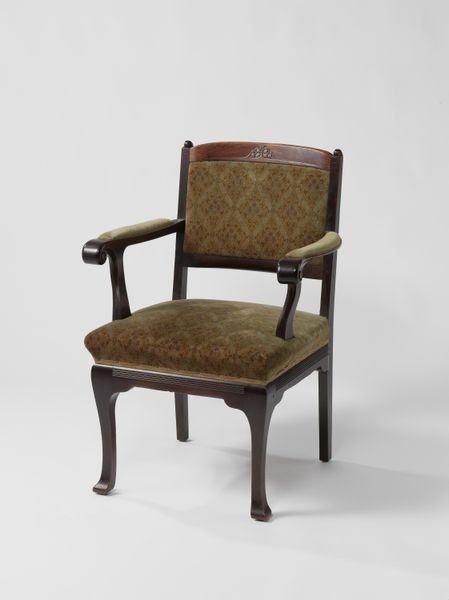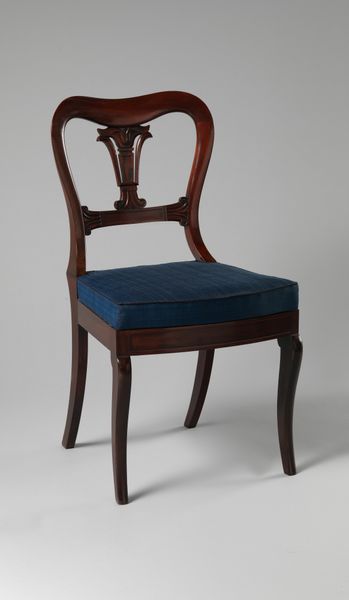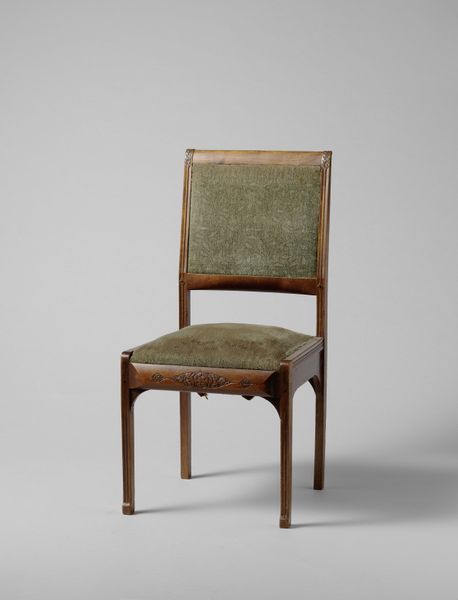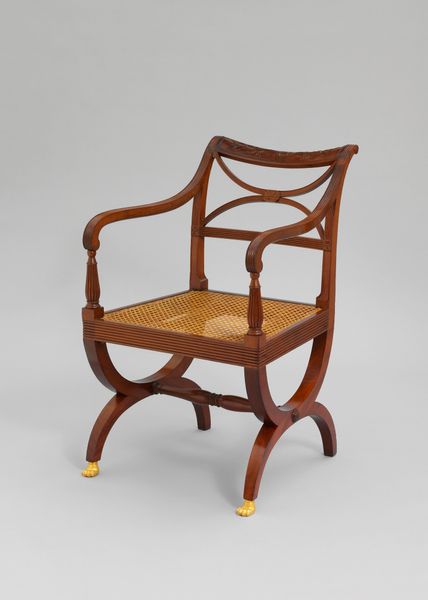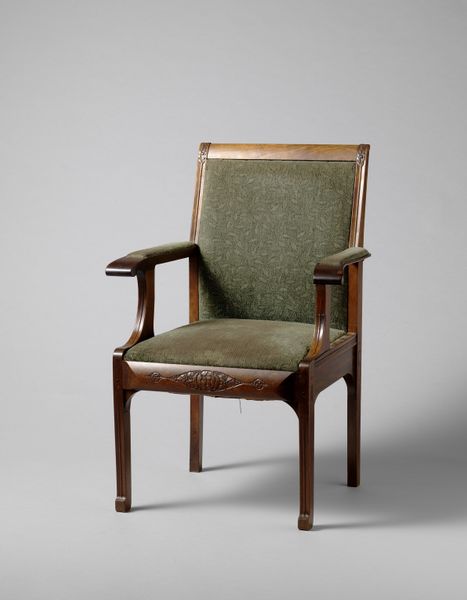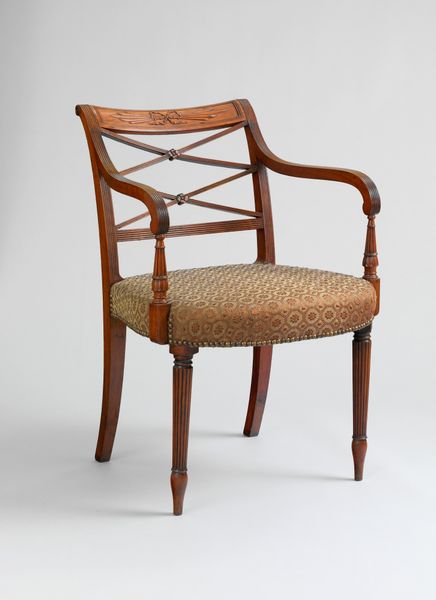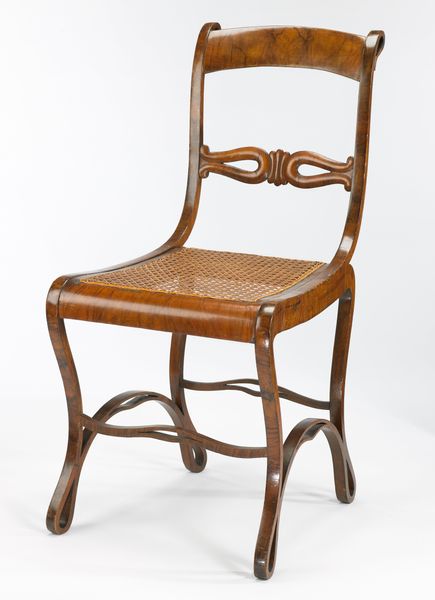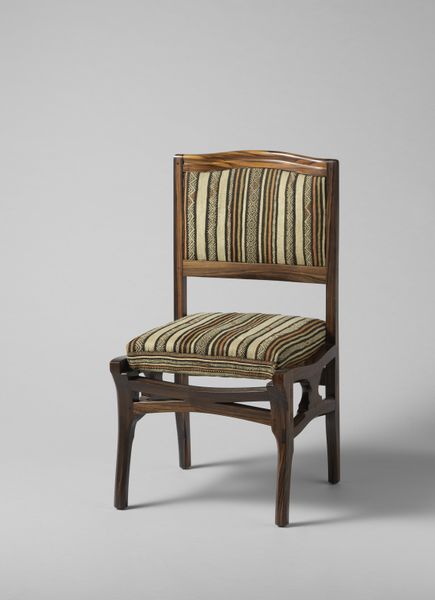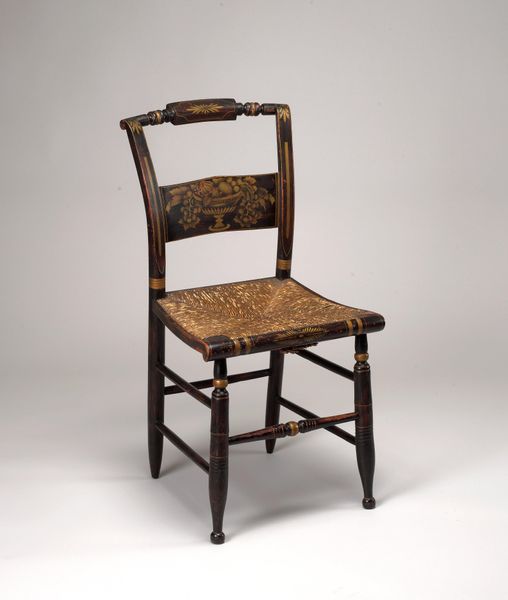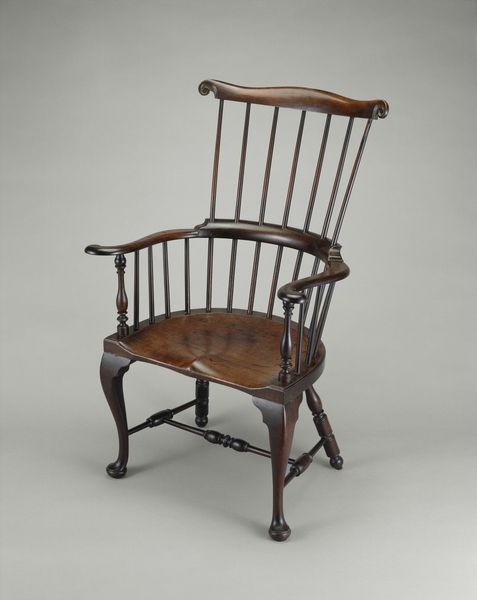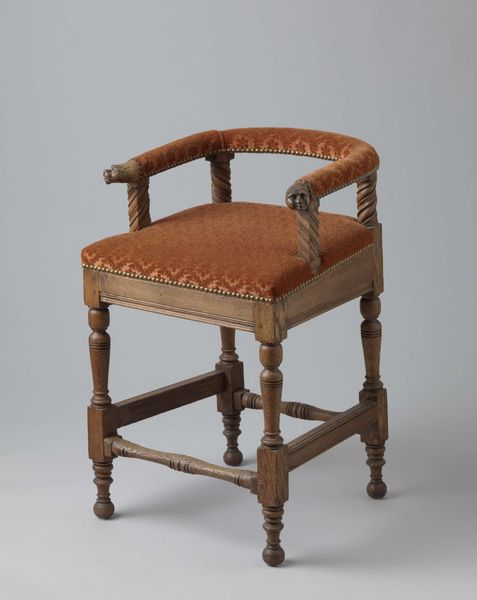
photography, wood
#
arts-&-crafts-movement
#
furniture
#
photography
#
wood
Dimensions: height 88.5 cm, width 59.5 cm, depth 55 cm, weight 22 kg
Copyright: Rijks Museum: Open Domain
Curator: Here we have "Armstoel," a chair crafted somewhere between 1915 and 1925 by Carel Adolph Lion Cachet, currently residing in the Rijksmuseum collection. Editor: It looks deceptively simple, doesn’t it? At first glance, it evokes a kind of restrained comfort, a muted elegance… though I can't help but see that its stillness also implies confinement and the rigidity of its time. Curator: Restraint is key here. Cachet was deeply involved in the Arts and Crafts movement. Looking at the wood, the joinery, the emphasis on handcrafting rather than industrial production… it speaks volumes. Each element—from the way the arms curve to how the legs taper—showcases meticulous labor. Editor: Precisely. But whose labor are we actually considering? Arts and Crafts often obscures the complex socioeconomic contexts that underpinned production. Who sourced the wood, and under what conditions? Was the fabric handwoven, and if so, by whom? I wonder about the global dynamics implicated even in such a "simple" object of domestic comfort. Curator: Good questions. There’s also Cachet's conscious elevation of craft to the level of fine art. He's forcing us to reconsider the hierarchy. By focusing on process and materiality, he challenges notions of "high" versus "low" art forms. The deliberate showing of the materials and joins becomes part of its artistic statement. Editor: That blurring is central. But what were the ethics surrounding the appropriation of those labor practices by Cachet himself? How did gender and class play out in the commissioning, making, and ownership of such furniture during the period? It feels complicit to the privilege afforded to a small number of affluent people. Curator: Absolutely, and thinking about that time of rapid social and industrial change, Cachet offers a slowing down, a return to quality and to valuing handmade things. And with that particular striped cushion... one can't help think about consumption as an implicit subject of this period piece. Editor: Ultimately, what strikes me is that behind what seems as domestic and still, resides social implications about labor conditions that remain pertinent. A chair, it turns out, offers a window into societal forces far beyond a single maker. Curator: Yes, indeed. It's a perfect reminder of how the focus on making informs deeper discussions.
Comments
No comments
Be the first to comment and join the conversation on the ultimate creative platform.
